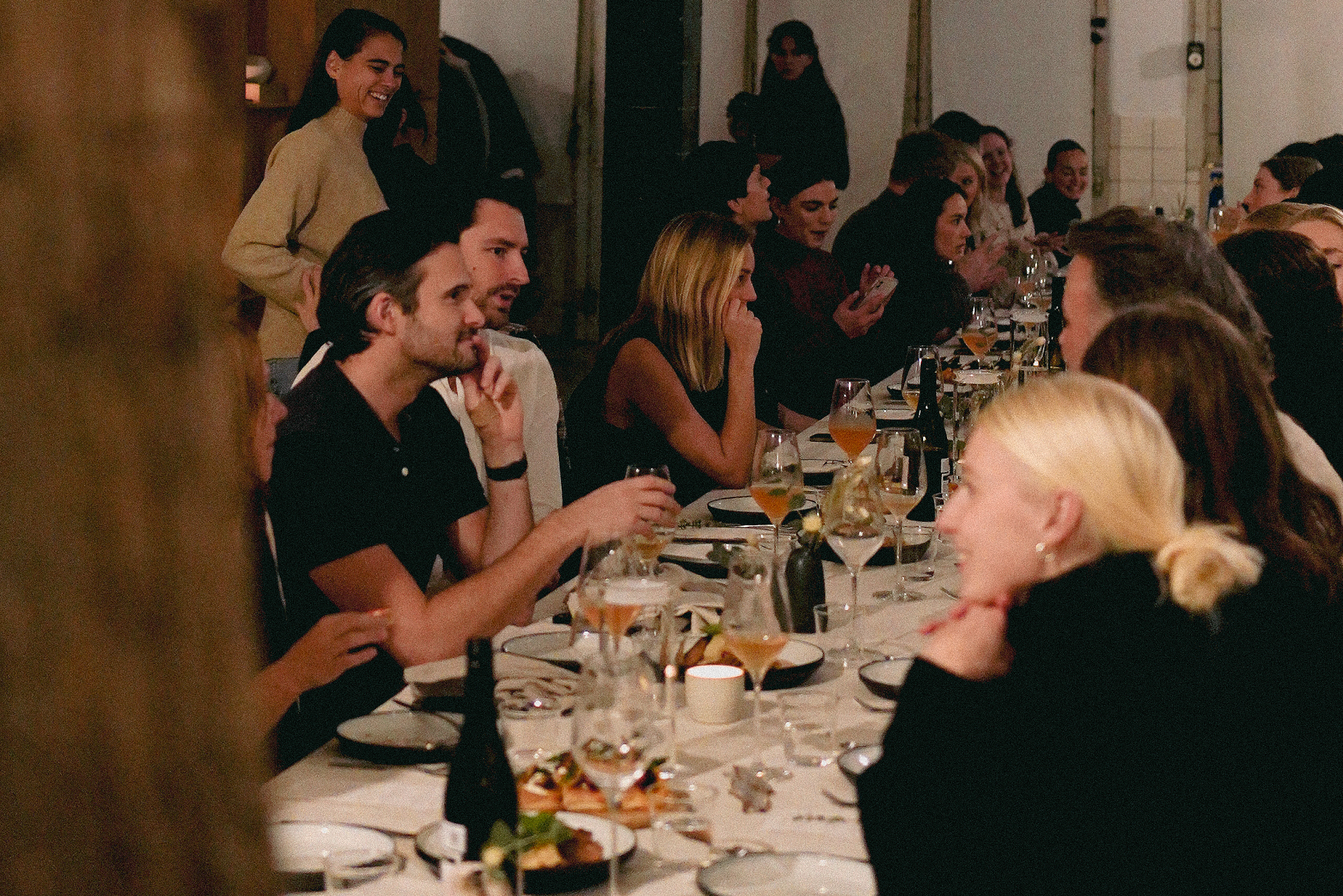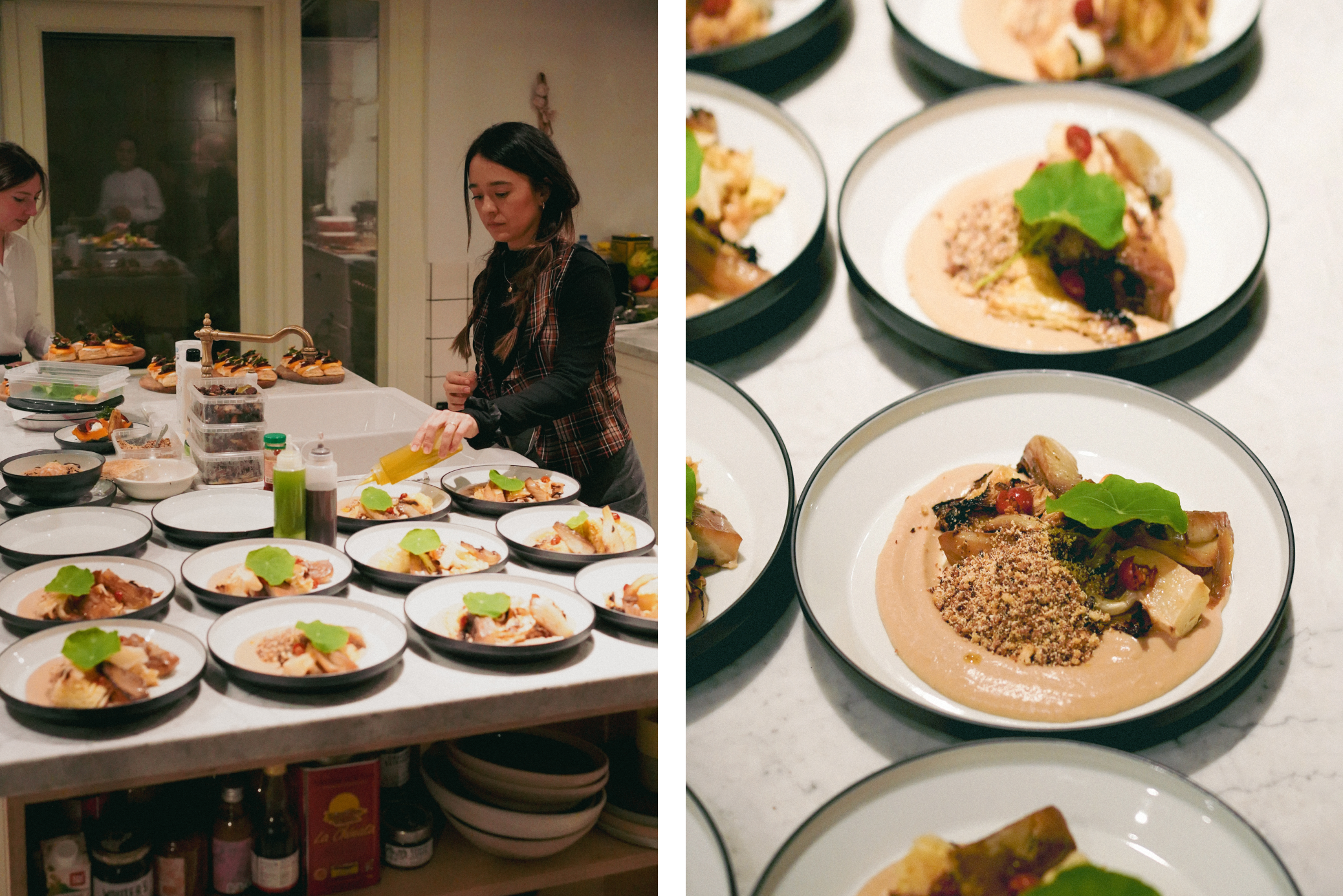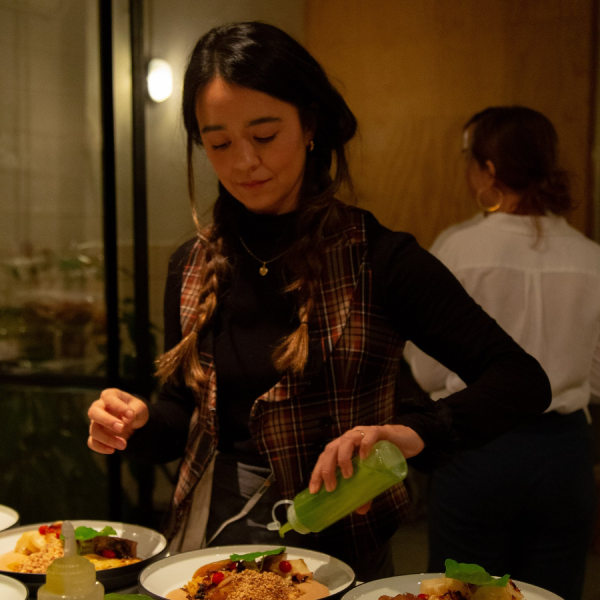For An Evening with KINTO, Amsterdam-based chef Agnes Sakai designed a four course menu to highlight the design of KINTO collections and to complement the special wines of GUBI GUBI, an importer of Japanese natural wine.
With Brazilian-Japanese roots, Agnes fondly recalls Domingos in Brazil – “My father would wake up early to grab fresh produce from the market, while my mom would cut fresh flowers from our garden to set a beautiful table. Lunch turns into dessert, then coffee, afternoon tea and suddenly it's dinner time”. Agnes runs a monthly supper club in Amsterdam called sakai.cooks where she looks to recreate that memory, build community and connect with the learnings from her late father, who taught her food as a love language.
Below, Agnes shares the recipe from the second course of An Evening with KINTO, in which she brought Japanese flavours from the miso, sake and sesame oil to meet ingredients she brought from Brazil, such as the biquinho peppers.

Ingredients
White Bean Miso Dip
• 2 cups cooked cannellini beans
• 2 tbsp miso
• 2 tbsp tahini
• 1 tbsp soy sauce
• 1 tsp roasted sesame oil
• 1/2 head of roasted garlic
• ½ lemon juice
• Togarashi optional to top
Sake Braised Fennel & Cabbage
• 2 large fennel bulbs
• ½ white or green cabbage
• 1 tbsp olive oil
• 1 cup vegetable broth
• 1/2 cup dry sake
• 2-3 sprigs of fresh thyme
• Salt and pepper to taste
Chestnut Farofa
• 2 tbsp of butter cold
• 1/2 onion diced
• 2 cloves of garlic minced
• 1 cup of white yuca/cassava flour
• ½ cup of cooked, peeled and diced chestnuts
• Salt and pepper to taste

Instructions
For the White Bean Miso Dip:
Add all ingredients to a blender and blend until smooth. Add water as needed until you reach the consistency of a runny hummus. Refrigerate until ready to serve. It will thicken as it sits in the fridge.
For the Sake Braised Fennel & Cabbage:
1. Cut the feathery leaves off the fennel bulbs and set them aside for garnish. Slice the fennel bulbs into quarters, leaving some of the core attached to keep the fennel from falling apart.
2. Remove the cabbage’s damaged outer leaves. Cut it in half and then into wedges. Leave the core in to prevent wedges from falling apart.
3. Add the oil to an oven-proof skillet set over medium heat. When the oil is hot, place the fennel quarters and cabbage wedges cut side down. Cook until lightly browned, 2-3 minutes. Flip the wedges over and cook for 1-2 minutes.
4. Sprinkle the surface of the vegetables with salt, and pepper. Pour the sake and vegetable broth into the pan, around the edges, not directly on the vegetables. Tuck the thyme sprigs into the liquid.
5. Cover the dish with foil or a lid and transfer to the oven. Cook in the oven for 60 to 75 minutes or until the core of the fennel and the cabbage are tender.
6. Remove from the oven, transfer to a serving dish and garnish with the leftover fennel fronds.
For the Chestnut Farofa:
1. In a frying pan over medium heat, add the onions and saute until transparent, about 2 mins
2. Add the garlic and fry until golden
3. Add the chestnuts and toss for 2 minutes
4. Add the yuca flour and season with salt and pepper to taste
5. Toast until brown and fragrant, stirring gently and constantly to avoid burning, about 5 mins.

Assembly
1. With a tablespoon, get a generous portion of the white bean miso dip and spread across the plate.
2. Place the fennel and cabbage wedges standing, next to the bean dip.
3. Contour the vegetables with two tablespoons of the farofa.
4. Garnish with biquinho peppers.
5. Top with a nasturtium leaf and splashes of herb oil.


Agnes Sakai
Agnes’ cooking style is a representation of her personality and the places she has been. You might see influences of the Middle East from her husband’s heritage, her stays in buddhist temples and mindfulness retreats, or simply inspiration from a recent travel destination. The menu is a surprise and ever-changing, but you can expect one constant: a seasonal, plant-forward feast.
@sakai.cooks




